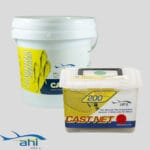Crested Cockscombs ( Celosia cristata ), also known as Crested Amaranth or Wool Flowers, are prized for their unique, brain-like flowerheads. This guide provides all the essential information you need, whether you’re a beginner or an experienced gardener seeking specific details.
Getting to Know Crested Cockscombs
Description and Characteristics
Crested Cockscombs are easily recognizable due to their fascinating crested flowerheads, which resemble velvety brains, roosters’ combs, or even coral. These unique blooms come in a variety of vibrant colors, ranging from fiery reds and oranges to rich purples, yellows, and even white. The texture of the flowerhead is another distinguishing feature, with a soft, almost wooly feel. The plants themselves are typically compact, reaching heights between 12 and 36 inches, depending on the variety.
Varieties
A wide array of Crested Cockscomb varieties are available, offering diverse colors and sizes. Some popular choices include ‘Chief’ series, known for their large, vibrant blooms, and ‘Kimono’ series, favored for their dwarf size, making them ideal for container gardens. Newer cultivars are continuously being developed, so exploring available options at local nurseries and online can reveal some exciting discoveries.
Cultivating Crested Cockscombs
Planting
Crested Cockscombs prefer warm, sunny locations, ideally with well-drained soil. They’re fairly low-maintenance plants, but providing them with a good start can ensure healthy growth and vibrant blooms. Seeds can be sown directly into the garden after the last frost, or started indoors 6-8 weeks before the last expected frost for earlier blooms.
Watering and Fertilizing
While Celosia tolerates some dryness, regular watering promotes optimal growth, especially during hot, dry periods. A balanced liquid fertilizer can be applied every few weeks to encourage abundant flowering. Over-fertilizing, however, can lead to excessive foliage growth at the expense of blooms, so moderation is key.
General Care
Deadheading spent flowers can encourage more blooms and prevent the plant from going to seed prematurely. Supporting taller varieties with stakes might be necessary, particularly in windy areas. Celosia are generally pest-resistant but can occasionally be affected by aphids or spider mites.
Uses and Significance
Ornamental Uses
Crested Cockscombs’ vibrant colors and unique shapes make them dramatic additions to gardens, borders, and containers. They also work beautifully as cut flowers, maintaining their shape and color for extended periods.
Dried Flowers
The flowers retain their shape and color remarkably well when dried, becoming striking components in everlasting arrangements. Hanging the cut stems upside down in a cool, dark place is a common drying method.
Culinary and Medicinal Uses
In some cultures, the leaves and young shoots of Crested Cockscombs are eaten as a leafy vegetable, adding a touch of color and texture to dishes. There’s also some historical use of Crested Cockscomb in traditional medicine, primarily in East Asia, though further research is needed to validate these practices.
Pests and Diseases
Though generally resilient, Crested Cockscombs can sometimes be susceptible to pests like aphids and spider mites. Early detection is key, and natural or chemical pest control methods can be employed if needed. Fungal diseases, such as leaf spot, are also a possibility, especially in humid conditions. Proper spacing and air circulation can help prevent fungal problems.
History and Symbolism
Celosia, originating in tropical Africa and Asia, has a long and rich history of cultivation. It likely reached Europe during the Middle Ages. In some cultures, the Cockscomb’s flame-like appearance associates it with immortality and courage. In Victorian flower language, Crested Cockscombs could represent affection, silliness, or singularity.
Creste di Galli: The Pasta
The name “Creste di Galli,” meaning “rooster’s crest,” also refers to a unique pasta shape with ruffled edges and a curved tubular form, echoing the appearance of the cockscomb flower. This shape is renowned for its ability to capture and hold sauces, creating a flavorful culinary experience. Discover the telltale signs of spoiled batana oil spoiled to ensure your Creste di Galli dishes are perfect every time. While enjoying your meal, learn more about the fascinating fahaka puffer fish and its unique aquatic lifestyle.
Cosa sono le creste di gallo? (What are rooster’s crests?)
“Creste di gallo” in Italian can refer to both the Crested Cockscomb flower and, colloquially, genital warts ( condylomata acuminata ). This section discusses genital warts, small, bumpy growths that can appear in the genital and anal areas. Caused by certain strains of the Human Papillomavirus (HPV), specifically types 6 and 11, they are considered a sexually transmitted infection (STI). Even without visible warts, HPV can be present, underscoring the importance of safe sex practices.
While often asymptomatic, some individuals experience itching, burning, or discomfort. Regular checkups are essential for early detection. Treatment options include topical medications and procedures like cryotherapy or electrocautery. While treatment effectively removes visible warts, it doesn’t eliminate the HPV virus itself, making recurrence possible.
Prevention focuses on the HPV vaccine, highly effective against the types of HPV that commonly cause genital warts. Safe sex practices are crucial as well, especially consistent condom use. Importantly, ongoing research continues to advance our understanding of HPV and its treatment.
Cosa sono le creste del gallo? (What are the rooster’s crests?)
This term, translating to “rooster’s crests,” can refer to both a pasta shape and genital warts. Here, we focus on genital warts ( condilomi acuminati ), flesh-colored or grayish bumps caused by certain strains of HPV. These strains, particularly types 6 and 11, are common among sexually active individuals. However, the presence of HPV doesn’t always result in noticeable symptoms.
Genital warts can be asymptomatic or manifest as small, flesh-colored bumps, sometimes cauliflower-like. Early diagnosis through visual examination by a healthcare professional is important. Treatments, ranging from topical medications to surgical removal, address the warts themselves but not the underlying HPV. This explains the possibility of recurrence.
Prevention through vaccination and safe sex practices remains crucial. The HPV vaccine targets the main culprit strains, while condoms offer additional, but not foolproof, protection. Ongoing research may lead to further advancements in our understanding and management of HPV and genital warts.
Come si eliminano le creste di gallo? (How are rooster’s crests removed?)
“Creste di gallo,” referring to genital warts, requires professional medical attention. Self-treatment is discouraged, as it can potentially worsen the condition. These warts, caused by HPV, can range in size and may cause itching, discomfort, or bleeding.
Diagnosis typically involves visual examination, sometimes with a biopsy for confirmation. Treatment options include cryotherapy, laser therapy, topical medications, and surgical excision. Each option has its own benefits and considerations, and the best approach depends on the specific case. Importantly, these treatments target the visible warts, not the HPV itself, so recurrence is possible.
Natural remedies are often suggested online, but their effectiveness isn’t scientifically established. Consulting a doctor before trying any at-home treatment is always recommended. Prevention, through the HPV vaccine and safe sex practices, remains the most effective approach. Consistent condom use reduces the risk of transmission, and HPV vaccination provides additional protection. Since medical knowledge continually evolves, staying informed and prioritizing your sexual health is essential.
- Nearest Airport to Moab: Your Canyonlands (CNY) Flight Guide - December 15, 2024
- NorthShore MegaMax: 12-Hour Protection for Maximum Confidence - December 15, 2024
- LifeSelector: Crafting Your Perfect Life Through Interactive Storytelling and AI - December 15, 2024















